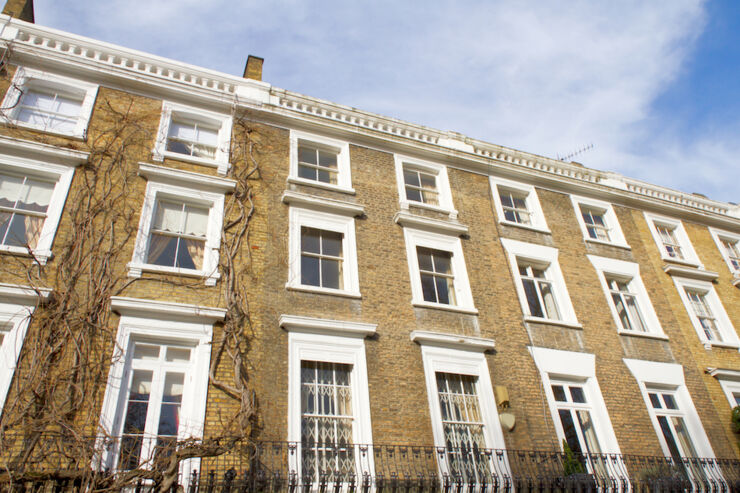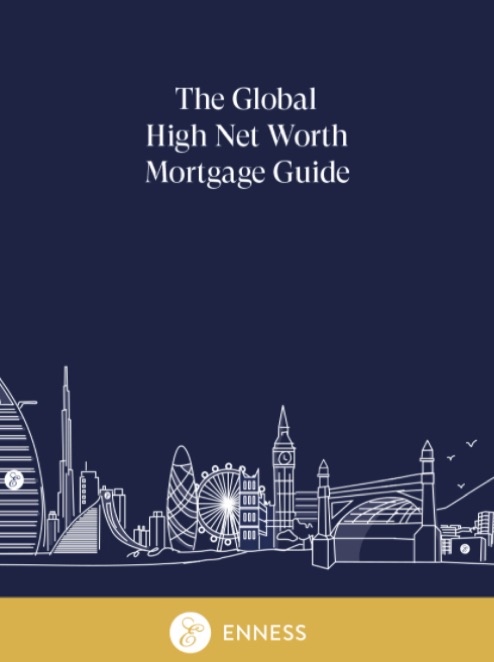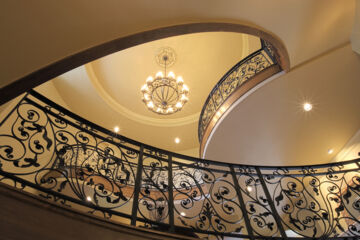
While we often come across clients looking to split large properties into two flat, we regularly speak to clients looking to move in the opposite direction and convert multiple flats into one larger property.
How to Convert Leasehold Property Into Freehold
The cost of converting two flats into one house can come in many forms but it is not impossible. This is a growing trend but one of the main problems is the leasehold/freehold situation which can make securing finance extremely challenging. However, our experience in this particular area paid dividends when we were approached by a client looking to do just that.
Client Scenario
In many cases, when looking to convert two flats into one property it is a case of what comes first, the chicken or the egg. Most lenders require the conversion to one property to occur before they agree mortgage finance. So, we knew it may be a challenging scenario when the client advised us they would need to raise additional capital to acquire the upstairs flat while at the same time refinancing their existing mortgage. Combining funding requirements into one mortgage, the idea was then to convert the two flats into one larger house at a later date.
So, the scenario for this case study was as follows:-
- Nationality: UK nationals
- Residency: UK
- Reason for purchase: Expand family home – combine two flats
- Mortgage requirements: Refinance existing mortgage plus funds for second floor flat purchase
- Combined income: Sufficient to pass affordability test
- Combined property price: £1 million
- Required LTV: 57%
- Mortgage term: 25 years
It is not difficult to see where the risks are with this particular proposal. While the LTV ratio was a fairly modest 57%, taking into account the details of the proposed transaction this would still be relatively challenging. Legal issues regarding the lease/freehold of the building and conversion to one freehold title deed would need to be addressed. Then we had refinancing of the existing mortgage on the ground floor flat to consider.
Issues to Address
As we touched on above, there are a number of issues to take into consideration when looking to secure finance for this particular type of transaction. It was fairly obvious from the beginning that we would require the assistance of a niche lender with experience in this market. The main issues to address were:-
- Legal issues: Switch from leasehold flats to freehold building
- Mortgage debt: £570,000 (refinance existing mortgage with additional funds for second floor flat)
- Due process: Raise funds, acquire second floor flat then merge into one home
- Initial security: Held against the two separate leasehold flats
- Target security: Freehold of building when two flats merged
The typical process for this type of transaction would be to merge the two properties using funds available/development finance, combine the two flats into one home and then refinance the combined property. So, our greatest challenge was to find a lender who was willing to firstly refinance the mortgage on the first floor flat and secondly make additional funds available to purchase the second floor flat – in one agreement, prior to being combined!
The Solution
The key to this particular case study was the need to find a lender able to make funds available against the individual properties but under one mortgage. Part of this would be a refinancing of the ground floor flat with additional funds for the acquisition of the second floor flat. Due to our independent status, we have no restrictions on the lenders we can talk to. As a consequence, we found a small building society which took a very helpful view of the proposal.
- Property value: £1 million
- Combined mortgage funding: £570,000
- Additional funding required: £430,000
- Mortgage type: Capital repayment
- Mortgage interest rate: 1.65% discounted variable rate
- Mortgage term: 25 years
The only way to secure the required mortgage funding in this particular scenario was via a capital repayment arrangement. The repayment of capital and interest on an ongoing basis, together with the 57% LTV ratio, offered sufficient security and headroom for the lender. The freehold nature of the combined building offered an improved degree of security not possible with leasehold properties.
This was the perfect solution, the clients were able to refinance their existing mortgage, acquire the second floor flat and then convert into one freehold property. While initially the two separate leasehold flats were used as security against the mortgage, once combined this security converted to one freehold property. When looking towards more traditional lenders it is more the process of buying and converting which would have been the main issue.
What can Enness do for you?
Our independent status gives us access to more than 500 different lenders across the market. You can also rest assured we have come across all manner of different property transactions and nothing phases us. In the above case study, the traditional course of action would have been to acquire the second flat with short term funding, combine the two and then secure mortgage finance. Using our contacts we were able to change the process and thereby remove the requirement for alternative short term capital which would have attracted relatively high-interest charges.
The key to successful mortgage funding is the ability to structure the arrangement around the client’s specific requirements to create a bespoke package. While some of our clients qualify for what may be termed traditional mortgage funding we tend to secure more bespoke packages. So, if you find yourself in a similar situation please feel free to give us a call and we can discuss your situation in more detail. We have access to real-time market rates which will allow you to compare and contrast different structures and bespoke arrangements to see which best suit your scenario.
Information contained in our case studies is for market and illustrative purposes only. In some cases, these may be made up of multiple cases and are for illustrative purposes only.
Some case studies are made up of enquiries that have come into the business, not all business completes, and the posting of a case study does not represent a completed piece of business.







